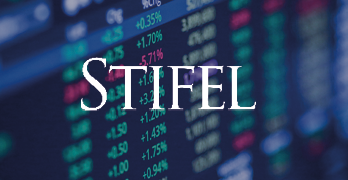BAI Index: Peak Freight Likely Upon Us But What Does That Mean for Rates?

Results are largely announced during this earnings season, and for companies across the industry –– at least the publicly traded ones — performance in the second quarter of 2022 has been strong. That performance comes in part from widespread and continued dislocations in supply chains, which we believe has helped drive record yields and pricing power. The situation has been similar for air cargo capacity providers in our view. On the supply side, ongoing bottlenecks from rolling Covid shutdowns in Asia, persistent port congestion in the United States (due to structural reasons, as well as episodic ones like AB5 Independent Contractor classification protests), and continued labour scarcity are factoring into the capacity equation. Demand side factors are also playing a part as inventories remain choppy and still low relative to sales in most cases. Meanwhile, many shippers are still concerned about disruption and are positioning themselves conservatively ahead of the 2022 peak season. Finally, despite energy price shocks and global inflation pressure, unemployment, consumer confidence, and retail sales remain stubbornly resilient.
For those reasons, we think global air cargo prices have remained steady on Asia-origin lanes. They are at least in line with (in the case of North America-destined routes) or materially above (in the case of Europe-destined routes) record levels set last year. On North America-destined routes, Hong Kong (BAI32) and Shanghai (BAI82), were up over 7% and 11% year-over-year, respectively. Meanwhile, inbound to Europe, Hong Kong origin (BAI31) and Shanghai origin (BAI81) were almost 40% higher and 65% higher year-over-year, respectively.
Corroborating further, capacity giants like UPS commented that large customers had many views on potential outcomes for the near and mid-term macroeconomic picture, but most were focused on securing capacity for peak. However, management consensus in our coverage seems to suggest that consumer volumes have softened in relation to industrial, and that supply chain congestion — while still acute — has eased compared to the beginning of the year.
Corroborating further, capacity giants like UPS commented that large customers had many views on potential outcomes for the near and mid-term macroeconomic picture, but most were focused on securing capacity for peak. However, management consensus in our coverage seems to suggest that consumer volumes have softened in relation to industrial, and that supply chain congestion — while still acute — has eased compared to the beginning of the year. From the vantage of its considerable freight forwarding operation, C.H. Robinson management said it anticipates further volume softening and has begun to see signs of air-to-ocean conversion. Meanwhile, we are seeing airfreight belly capacity return to the market, with recovery being seen faster on some lanes, like the TransAtlantic, than others. However, the gradual resumption of passenger flights should continue to be a headwind for general cargo rates, regardless of lane.
Putting the pieces together, our view is that we have seen peak freight volumes, both broadly and on a global basis. Absolute rates can still move higher, especially if and as we follow seasonal patterns. However, the gulf between current rates and those seen a year or two ago should continue to moderate.
Putting the pieces together, our view is that we have seen peak freight volumes, both broadly and on a global basis. Absolute rates can still move higher, especially if and as we follow seasonal patterns. However, the gulf between current rates and those seen a year or two ago should continue to moderate. The process likely happens gradually given the amount of dislocation still present in global supply chains, which means that full normalisation of rates to historical levels probably will not happen until well into 2023.
As we said last month, the outlook is still very cloudy. So let us be clear about our conclusion: we have likely seen peak freight. However, demand trends so far look to be moderating slowly, although geopolitical uncertainty suggests a large standard deviation around any prediction of outcomes. Meanwhile, supply is gradually loosening. It looks to us like pressure is coming off, but slowly, and with no guarantee that the glide path will be smooth.
About Bruce Chan, Director & Senior Analyst, Global Logistics & Future Mobility Equity Research, Stifel
Bruce Chan joined Stifel in 2010 and is based out of the Miami office.
Bruce Chan can be reached at chanb@stifel.com. Opinions expressed are subject to change without notice and do not take into account the particular investment objectives, financial situation or needs of individual investors. For more information and current disclosures for the companies discussed herein, please go to the research page at www.stifel.com.
©2022 by J. Bruce Chan.